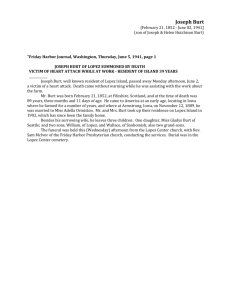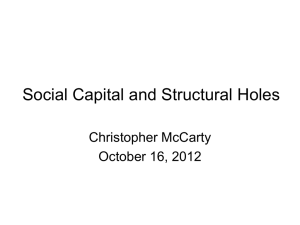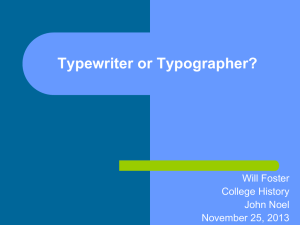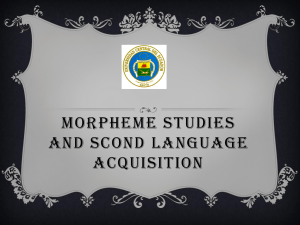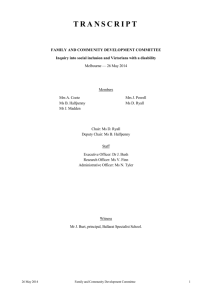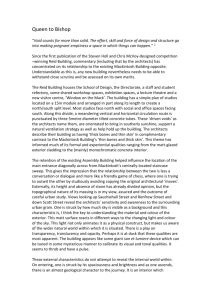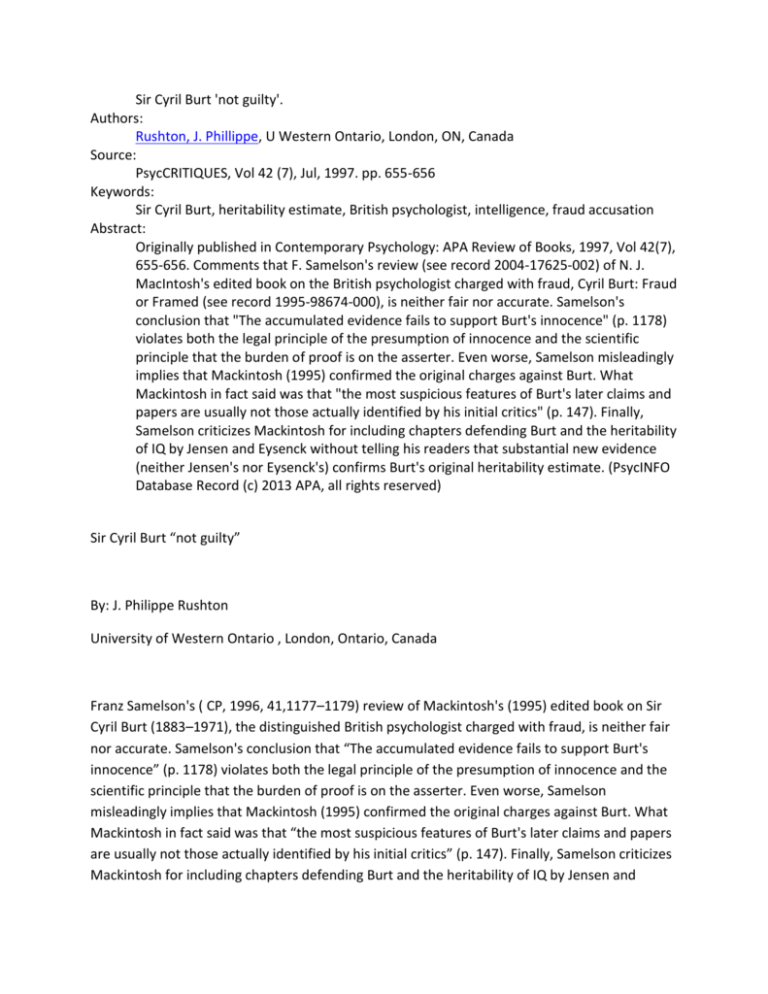
Sir Cyril Burt 'not guilty'.
Authors:
Rushton, J. Phillippe, U Western Ontario, London, ON, Canada
Source:
PsycCRITIQUES, Vol 42 (7), Jul, 1997. pp. 655-656
Keywords:
Sir Cyril Burt, heritability estimate, British psychologist, intelligence, fraud accusation
Abstract:
Originally published in Contemporary Psychology: APA Review of Books, 1997, Vol 42(7),
655-656. Comments that F. Samelson's review (see record 2004-17625-002) of N. J.
MacIntosh's edited book on the British psychologist charged with fraud, Cyril Burt: Fraud
or Framed (see record 1995-98674-000), is neither fair nor accurate. Samelson's
conclusion that "The accumulated evidence fails to support Burt's innocence" (p. 1178)
violates both the legal principle of the presumption of innocence and the scientific
principle that the burden of proof is on the asserter. Even worse, Samelson misleadingly
implies that Mackintosh (1995) confirmed the original charges against Burt. What
Mackintosh in fact said was that "the most suspicious features of Burt's later claims and
papers are usually not those actually identified by his initial critics" (p. 147). Finally,
Samelson criticizes Mackintosh for including chapters defending Burt and the heritability
of IQ by Jensen and Eysenck without telling his readers that substantial new evidence
(neither Jensen's nor Eysenck's) confirms Burt's original heritability estimate. (PsycINFO
Database Record (c) 2013 APA, all rights reserved)
Sir Cyril Burt “not guilty”
By: J. Philippe Rushton
University of Western Ontario , London, Ontario, Canada
Franz Samelson's ( CP, 1996, 41,1177–1179) review of Mackintosh's (1995) edited book on Sir
Cyril Burt (1883–1971), the distinguished British psychologist charged with fraud, is neither fair
nor accurate. Samelson's conclusion that “The accumulated evidence fails to support Burt's
innocence” (p. 1178) violates both the legal principle of the presumption of innocence and the
scientific principle that the burden of proof is on the asserter. Even worse, Samelson
misleadingly implies that Mackintosh (1995) confirmed the original charges against Burt. What
Mackintosh in fact said was that “the most suspicious features of Burt's later claims and papers
are usually not those actually identified by his initial critics” (p. 147). Finally, Samelson criticizes
Mackintosh for including chapters defending Burt and the heritability of IQ by Jensen and
Eysenck without telling his readers that substantial new evidence (neither Jensen's nor
Eysenck's) confirms Burt's original heritability estimate.
“The Burt affair” began when Kamin (1974) charged that Burt's published correlations for the
similarity in IQ among identical twins raised apart ( r=0.77) were implausibly high and
implausibly invariant from his 1943 study of 15 pairs to his 1966 study of 53 pairs. The
controversy reached the general public in 1976 when a story in London's Sunday Times, “Crucial
Data Was Faked by Eminent Psychologist,” also claimed Burt's research assistants, Jane Conway
and Margaret Howard, may never have existed. Scandal raged for about three years until
Hearnshaw (1979), Burt's biographer, with access to Burt's private correspondence and diaries,
concluded that Burt was “guilty.” In 1980, the British Psychological Society, refusing to
undertake an enquiry of its own, endorsed the guilty verdict. The story of the Burt affair,
complete with faked data and faked research assistants, subsequently entered introductory
textbooks as received wisdom.
Ten years later, two independently written, meticulously thorough books completely vindicated
Burt (both “missing” research assistants were found, and the twin data had not been
“cooked”). These authors described how Burt had been railroaded by a small group of politically
committed scholars on both sides of the Atlantic dedicated to declaring the genetic basis of
behavior anathema (Joynson, 1989; Fletcher, 1991). A sociologist, Fletcher (1991) in particular
showed how ideology, in alliance with a receptive popular journalism, whipsawed scientific
discourse on the whole issue of the heritability of intelligence.
As a historian of psychology, Samelson (1996) bore a special responsibility to inform his readers
that the book he was reviewing did not confirm the initial charges that Burt faked his twin data.
Although Samelson presented his readers with Mackintosh's (1995) verdict that it was “more
probable than not that some of the data reported existed only in his [Burt's] imagination, in
other words that he fabricated them” (p. 148), he misled his readers by not telling them that
this verdict relates to a quite different allegation—that Burt had faked his claim of a one-point
decline in the IQ performance of London schoolchildren between 1914 and 1965, not the twin
data! The evidence for this supposed fraud, according to Mackintosh, is that studies elsewhere
in the world typically find a 10-point increase in IQ over this time period. Hence, according to
Macintosh, Burt's data “could not possibly be true” (p. 147). But, for reasons best known to
himself, Mackintosh refused to consider that the decline in IQ in London schools was due to the
large-scale immigration from Africa and the Black Caribbean that has occurred since 1945.
Samelson (1996) also misleads his readers over the now extensive, independent evidence for
the heritability of IQ, instead hypocritically musing over the ethical standards of science on this
issue and their supposed failure to be self-correcting. Samelson complains that Mackintosh
includes chapters by Jensen (“not exactly an innocent bystander on matters of IQ heritability,”
p. 1177) and Eysenck (“a déjà vu experience,” p. 1177) but completely fails to tell his readers
about any of the five other studies of identical twins raised apart that now corroborate Burt's
assessment (e.g., Bouchard, Lykken, McGue, Segal, & Tellegen, 1990; Pedersen, Plomin,
Nesselroade, & McClearn, 1992; Jensen, 1992). By the way, the average heritability of those
studies, weighted by sample size, is 0.75—almost identical to Burt's supposedly “faked”
correlation of 0.77! I leave it to your readers to decide which parties in the “Burt affair” are the
real fakers!
References
Bouchard, T. J., Jr., Lykken, D. T., McGue, M., Segal, N. L., & Tellegen, A. ( 1990). Sources of
human psychological differences: The Minnesota study of twins reared apart. Science, 250,
223– 228.
Fletcher, R. ( 1991). Science, ideology and the media. New Brunswick, NJ: Transaction.
Hearnshaw, L. S. ( 1979). Cyril Burt: Psychologist. New York: Random House.
Jensen, A. R. ( 1992). Scientific fraud or false accusation? The case of Cyril Burt. In D. J.Miller
and M.Hersen ( Eds.), Research fraud in the behavioral and biomedical sciencesNew York:
Wiley.
Joynson, R. B. ( 1989). The Burt affair. London: Routledge.
Kamin, L. J. ( 1974). The science and politics of IQ. Hillsdale, NJ: Erlbaum.
Mackintosh, N. J. ( 1995). Cyril Burt: Fraud or framed?Oxford, England: Oxford University Press.
Pedersen, N. L., Plomin, R., Nesselroade, J. R., & McClearn, G. E. ( 1992). A quantitative genetic
analysis of cognitive abilities during the second half of the life span. Psychological Science, 3,
346– 353.

